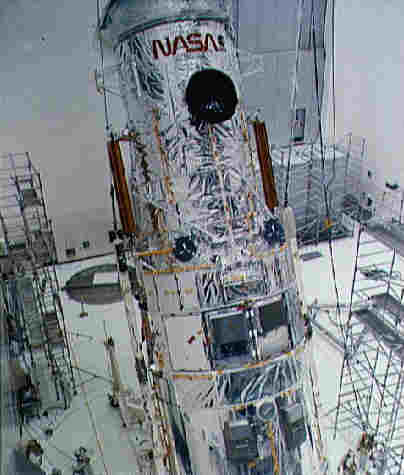| How
the Hubble Space Telescope Works
The Hubble is a satellite.
It orbits the Earth very quickly, completing one revolution
every 97 minutes. This means the Hubble moves a speed of about 5 miles
per second, or 18,000 miles per hour! When the Hubble observes distant
stars and galaxies, it must stay pointed in the same direction for
hours at a time. In addition, it must remain stable while fighting the
effects of the Earth’s gravity and the solar wind.
How does the Hubble remain stable?
While the telescope is making observations, computer-controlled
machines called gyroscopes keep it stable and pointed in the
right direction. The Hubble requires very precise pointing to take
good pictures.
The operation of the Hubble is
controlled by scientists and engineers at the Space Telescope Science
Institute, located near Baltimore, Maryland. The scientists, who are
from all over the world, decide where they want the telescope to look,
and what kind of information they want to collect. The engineers are
responsible for giving commands to the satellite and making sure it
stays in working order.
|

Hubble Space Telescope preassembly.
|